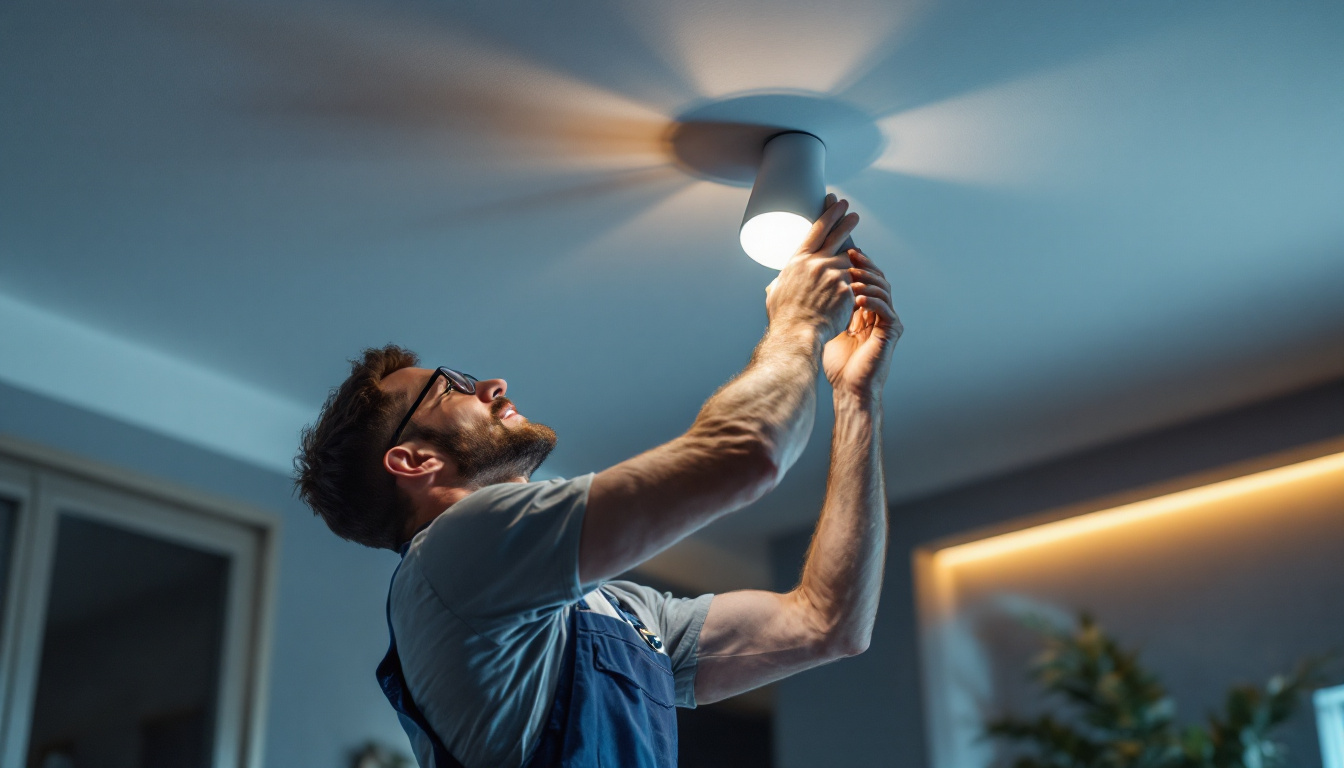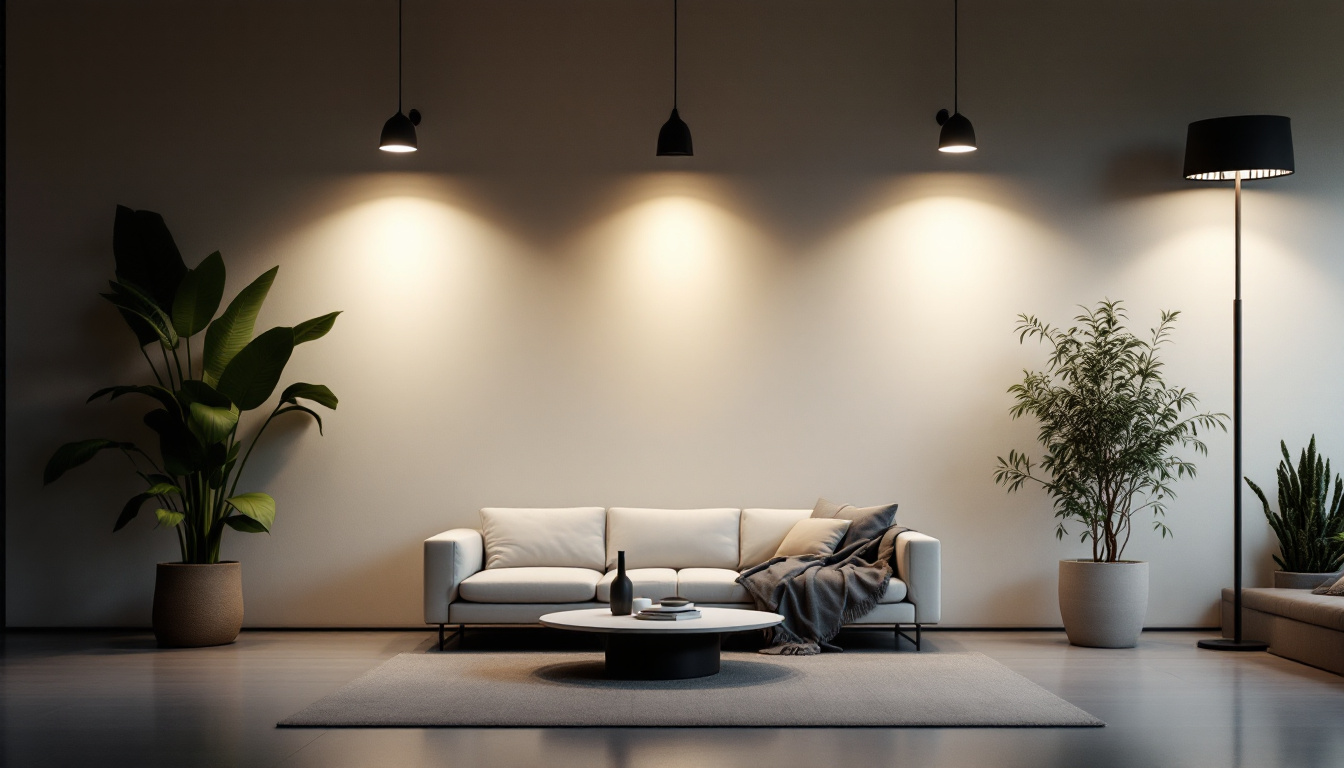
Lighting is an essential component of any construction or renovation project, and understanding the intricacies of ceiling lighting can significantly enhance the quality of a contractor’s work. This article aims to demystify ceiling lighting, providing valuable insights for lighting contractors to improve their expertise and deliver exceptional results to their clients.
Ceiling lighting serves not only as a functional element but also as a critical design feature in any space. It encompasses a variety of fixtures and techniques that can transform the ambiance of a room. From recessed lights to chandeliers, the choices available can be overwhelming for both contractors and clients alike.
There are several types of ceiling lighting fixtures, each with its unique characteristics and applications. Understanding these types is crucial for any lighting contractor.
Selecting the appropriate ceiling lighting fixture involves understanding the specific needs of the space. Factors such as ceiling height, room size, and the intended use of the area should guide the decision-making process.
For instance, in a large living room, a combination of recessed lighting and a statement chandelier can create a balanced and inviting atmosphere. Conversely, in a small bathroom, flush mounts or compact recessed lights may be more suitable to avoid overwhelming the space.
Additionally, the color temperature of the bulbs used in these fixtures can dramatically affect the mood of the room. Warm white bulbs (around 2700K) create a cozy and intimate environment, perfect for living areas and bedrooms, while cooler white bulbs (around 5000K) are ideal for task-oriented spaces like kitchens and offices, where clarity and focus are essential. Furthermore, dimmable options can provide versatility, allowing users to adjust the brightness according to the time of day or occasion.
Another important consideration is the energy efficiency of the lighting fixtures. With the rise of LED technology, many ceiling lights now offer long-lasting solutions that consume significantly less energy than traditional incandescent bulbs. This not only reduces electricity bills but also contributes to a more sustainable lifestyle. As such, lighting contractors should stay informed about the latest advancements in lighting technology to provide clients with the best options available.
Effective lighting design goes beyond merely choosing fixtures; it involves a thoughtful approach that considers the interplay of light and space. Lighting contractors must be familiar with key design principles to create harmonious environments. The right lighting can transform a mundane space into an inviting atmosphere, enhancing both functionality and aesthetics. By understanding how light interacts with colors, materials, and architectural features, designers can craft experiences that resonate with the occupants.
Layering light involves combining different types of lighting—ambient, task, and accent—to achieve a well-rounded illumination scheme. Ambient lighting provides overall illumination, task lighting focuses on specific areas, and accent lighting highlights particular features. This multifaceted approach not only ensures that spaces are adequately lit but also adds depth and dimension to the environment.
For example, in a kitchen, ambient lighting can be achieved through recessed lights, while pendant lights above the island serve as task lighting. Accent lighting, such as under-cabinet lights, can highlight the backsplash or decorative elements. Additionally, incorporating dimmers can enhance the versatility of these layers, allowing homeowners to adjust the lighting according to the time of day or the mood they wish to create. This flexibility is particularly valuable in spaces that serve multiple functions, such as dining areas that transition from casual family meals to elegant dinner parties.
Understanding color temperature and brightness is essential for creating the desired mood in a space. Color temperature, measured in Kelvins (K), affects how warm or cool a light appears. Warm white light (around 2700K) creates a cozy atmosphere, while cool white light (above 4000K) offers a more energetic feel. This consideration is crucial in spaces like bedrooms, where a warm glow can promote relaxation, versus home offices, where cooler tones can enhance focus and productivity.
Brightness, measured in lumens, also plays a critical role. A well-lit room should have sufficient brightness to perform tasks without causing glare or discomfort. Lighting contractors must consider both aspects when recommending fixtures to clients. Furthermore, the distribution of light is just as important as its intensity; uneven lighting can lead to shadows and visual discomfort. By strategically placing fixtures and selecting the appropriate wattage, designers can ensure that every corner of a room is inviting and functional, creating a seamless flow throughout the space. This careful balance of color temperature and brightness not only enhances the visual appeal but also contributes to the overall well-being of the occupants, making thoughtful lighting design an essential aspect of any interior project.
The installation of ceiling lighting involves various technical aspects that contractors must navigate. Proper installation ensures safety, functionality, and aesthetic appeal.
Before installation, it is crucial to assess the electrical requirements of the chosen fixtures. This includes understanding the wattage, voltage, and circuit compatibility. Failure to adhere to these requirements can lead to electrical hazards or inadequate lighting performance.
Contractors should also be aware of local building codes and regulations regarding electrical installations. Compliance with these standards is essential for ensuring safety and avoiding potential liabilities.
The structure of the ceiling can impact the installation process. For instance, installing heavy fixtures like chandeliers requires adequate support to prevent sagging or damage. Contractors should assess the ceiling type—whether it’s drywall, plaster, or a suspended grid—and determine the appropriate mounting techniques.
Using the right anchors and supports is vital to ensure that the fixtures remain securely in place. This not only enhances safety but also prolongs the lifespan of the lighting installations.
In today’s environmentally conscious landscape, energy efficiency and sustainability are paramount considerations for lighting contractors. Clients are increasingly seeking solutions that minimize energy consumption while maintaining aesthetic appeal.
LED (Light Emitting Diode) technology has revolutionized the lighting industry, offering significant advantages over traditional incandescent and fluorescent bulbs. LED fixtures consume less energy, have a longer lifespan, and produce less heat, making them an ideal choice for ceiling lighting.
Contractors should educate clients about the benefits of LED lighting, including potential cost savings on energy bills and reduced maintenance requirements. Additionally, many LED products are now available in various styles and color temperatures, ensuring that aesthetic preferences are met without compromising efficiency.
Integrating smart lighting technology into ceiling installations is another way to enhance energy efficiency. Smart lighting systems allow users to control brightness, color temperature, and scheduling through mobile apps or voice commands.
Contractors should stay informed about the latest smart lighting options and be prepared to offer clients solutions that align with their lifestyle and energy-saving goals. This not only adds value to the project but also positions contractors as knowledgeable professionals in the evolving lighting landscape.
Lighting contractors often encounter challenges during the planning and installation phases of ceiling lighting projects. Understanding these challenges and their solutions can streamline the process and improve client satisfaction.
Low ceilings can pose a significant challenge when it comes to selecting and installing lighting fixtures. In such cases, flush mounts and recessed lighting are often the best options, as they provide illumination without taking up valuable headroom.
Additionally, using light colors on the ceiling can create an illusion of height, making the space feel more open. Contractors should also consider the use of mirrors or reflective surfaces to enhance the perception of space.
Another common challenge is balancing aesthetics with functionality. Clients may have specific design preferences that do not align with optimal lighting solutions. In these situations, contractors should engage in open communication to understand the client’s vision while providing expert recommendations.
Offering a range of options that meet both aesthetic and functional requirements can help bridge the gap. For example, suggesting stylish yet practical fixtures that provide adequate illumination while complementing the overall design can lead to a successful outcome.
The lighting industry is constantly evolving, with new trends emerging that can influence ceiling lighting design and installation. Staying ahead of these trends can help contractors remain competitive and meet client demands.
Biophilic design, which emphasizes the connection between nature and the built environment, is gaining popularity in lighting design. Incorporating natural elements, such as organic shapes and materials, into ceiling lighting can create a calming and inviting atmosphere.
Contractors should consider how to integrate biophilic principles into their lighting designs, whether through the use of natural materials or fixtures that mimic natural forms. This approach not only enhances aesthetics but also promotes well-being in indoor spaces.
Human-centric lighting focuses on the impact of light on human health and well-being. This trend emphasizes the importance of natural light patterns and color temperatures that align with the circadian rhythm.
Contractors can explore options for tunable white lighting, which allows users to adjust the color temperature throughout the day. This flexibility can enhance productivity in workspaces and promote relaxation in residential settings.
Ceiling lighting is a multifaceted aspect of interior design that requires a comprehensive understanding of various elements. For lighting contractors, mastering the principles of ceiling lighting can lead to improved project outcomes and heightened client satisfaction.
By staying informed about the latest trends, technologies, and best practices, contractors can position themselves as experts in the field. Whether it’s selecting the right fixtures, understanding installation nuances, or embracing energy-efficient solutions, a well-rounded knowledge of ceiling lighting is essential for success in the industry.
Ultimately, the goal is to create spaces that are not only visually appealing but also functional and sustainable. With the right approach, lighting contractors can illuminate their clients’ visions while enhancing their own professional capabilities.
Ready to elevate your lighting projects with the highest quality fixtures at unbeatable prices? Look no further than LumenWholesale. Our spec-grade lighting products are designed to meet the rigorous demands of any space, ensuring durability and performance. Say goodbye to local distributor markups and hello to cost-effective, premium lighting solutions. Plus, with free shipping on bulk orders, you can stock up on everything you need without worrying about extra costs. Don’t compromise on quality or value—choose LumenWholesale for your lighting needs and make every project shine. Wholesale Lighting at the Best Value is just a click away.

Explore the rise of Phoenix Day Lighting and its transformative impact on the lighting industry.

Discover expert insights and practical tips on the Feit LED Shop Light tailored specifically for lighting contractors.

Discover the essential facts about canned lights that every lighting contractor needs to know.

Discover how industrial LED shop lights revolutionize safety in lighting installations.